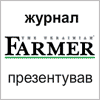Cattle Rise on Signs of Shrinking Feedlot Supplies; Hogs Drop
Cattle rose for the fourth time in five sessions after a report showed that U.S. feedlots bought fewer animals than expected in March, signaling reduced supplies of fattened cattle in the future. Hogs declined.
Feedlots purchased 1.857 million young cattle in March, up 2.7 percent from a year earlier, the U.S. Department of Agriculture reported April 23 after trading closed in Chicago. Analysts in a Bloomberg News survey were expecting a 6.3 percent jump. Wholesale choice beef climbed to $1.7034 a pound at midday, the highest since July 2008, USDA data show.
“The supply fundamentals have been phenomenally friendly, and we’ve done better than expected in so many instances on the demand side,” said David Kruse, a commodity trading adviser at CommStock Investments Inc. in Royal, Iowa. “Packers continue to push beef prices higher, trying to find a level where retailers will say no, but evidently they haven’t found it yet.”
Cattle futures for June delivery rose 0.675 cent, or 0.7 percent, to 95.5 cents a pound on the Chicago Mercantile Exchange. Prices are up 16 percent in the past year. Feeder- cattle futures for August settlement gained 1.375 cents, or 1.2 percent, to $1.1695 a pound.
The overall feedlot herd on April 1 was 3.5 percent smaller than a year earlier at 10.769 million head, the fewest for the date since 2004, the USDA report showed.
Lighter Cattle
In addition, fewer heavy-weight cattle have been available to feedlots, because harsh winter weather has curbed weight gains, Kruse said. Rising cattle prices also spurred feedlots to sell animals early instead of spending more time fattening them, he said. Lighter cattle yield less beef.
Feedlots bought 1.087 million head of cattle weighing 700 pounds or more in March, 6.5 percent fewer than during the same month last year, according the USDA. In the first four days of last week, steer carcasses weighed 849 pounds on average, 0.5 percent less than the same period in 2009.
“The kill has been running ahead of year-ago levels, even though we have fewer cattle on feed,” Kruse said. “You can only do that for a while, before pretty soon you use up your front-end supply.”
Hog futures for June settlement declined 0.9 cent, or 1.1 percent, to 84.275 cents a pound, after opening higher. The most-active contract has gained 18 percent in the past year, as extended losses spurred producers to cut herds.
Wholesale pork fell 0.4 percent to 90.3 cents a pound on April 23, snapping a 16-session rally. The price reached 90.68 cents on April 22, the highest level since August 2008. High prices may curb consumer demand for pork, Kruse said.
Whitney McFerron
Source: Bloomberg
- 2544 reads








